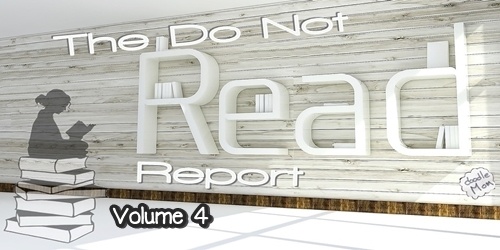
This is our fourth week in The Do Not Read Report and in spite of the book’s name, there is no courage here. The idea behind these posts is to share the books that I really did not want my kids to read. The book this week was one which was on the required reading list when I was in middle school, and is still required by many schools today.
Let me introduce the book first.
THIS WEEK’S BOOK:
The Red Badge of Courage by Stephen Crane
Summary: A teenager named Henry joins the Union army and runs away in battle. He then changes his mind because he wishes to have the “red badge of courage” which is a wound. Henry finds his regiment, and is told that they lost the battle because of the general’s incompetence. He then overhears the general saying that he will sacrifice the regiment in the next battle.
THE RED BADGE OF COURAGE HAS BEEN DESCRIBED AS A PSYCHOLOGICAL PORTRAYAL OF FEAR, IT IS NOT A STORY ABOUT COURAGE OR BRAVERY OR BECOMING A MAN. IT IS A STORY ROMANTICIZING COWARDICE.
This book is recommended for middle school aged children by the publisher and school districts throughout the country.
The Red Badge of Courage is described as an important piece of literature that changed the way people viewed war, but it is in fact a story written by an author who never saw the battlefield who focused his life on the inability of humans to escape misery and hopelessness.
Is that really what you want to fill your child’s head with?
THE BOOK TEACHES YOUR CHILD:
- Shift blame from yourself: The men in the regiment teach Henry that he must question leadership and expect that authority figures will act without concern for individuals.
- It is OK to run away when you are scared: When Henry enters his first battle he is scared and runs away. In reality wars are and always have been fought by young men and teens. The story ignores the crime of desertion from the field of battle because the teen was scared. That actually teaches your children that is OK to lose your bravery in moments where it really count. There will not be any significant consequences.
“They were going to look at war, the red animal–war, the blood-swollen god.”
“A dog, a woman, an’ a walnut tree, Th’ more yeh beat ’em, th’ better they be! That’s like us.”
“He now thought that he wished he was dead. He believed that he envied those men whose bodies lay strewn over the grass of the fields and on the fallen leaves of the forest. The simple questions of the tattered man had been knife thrusts to him. They asserted a society that probes pitilessly at secrets until all is apparent.”
ABOUT THE AUTHOR
Stephen Crane lived a short life (1871-1900) as a writer and correspondent. He was academically weak in school, dropped out of college, and spent his live chasing the dream of becoming a war correspondent. He never fought in battle himself, except for the “war games” played in school.
All Crane’s stories focus on misery and hopelessness of the human condition. He possessed a measured disdain for religion, in spite of the active Christian life his father led as a minister.
As an adult, Crane gravitated towards poverty and debauchery. He had multiple affairs with women (single, married, and purchased), and at least one male prostitute. And lived for years with a woman who was at the time married to another man. Overall, Crane’s life explains much of the outlook in his stories, and the morals demonstrated in his books.